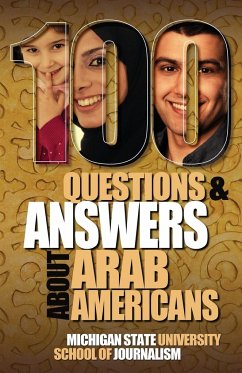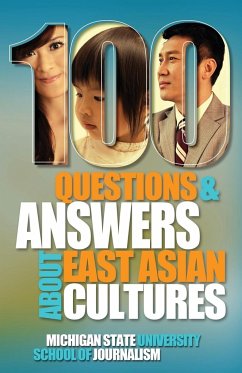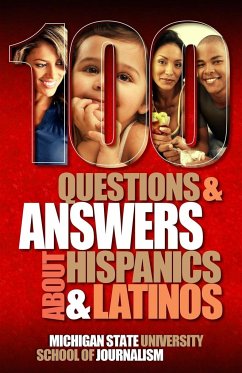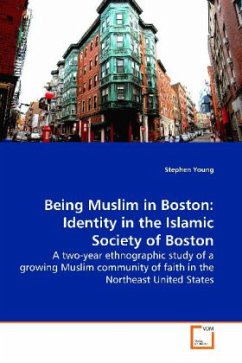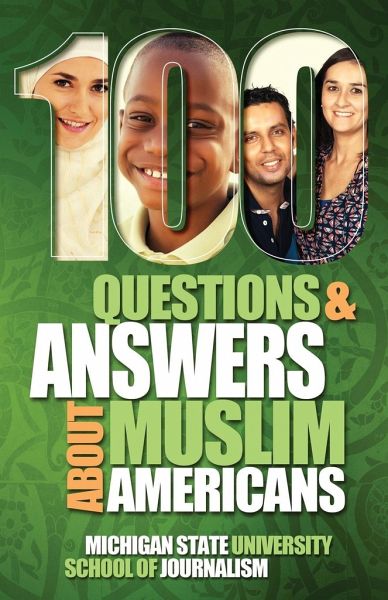
100 Questions and Answers About Muslim Americans with a Guide to Islamic Holidays
Versandkostenfrei!
Versandfertig in 1-2 Wochen
15,99 €
inkl. MwSt.

PAYBACK Punkte
8 °P sammeln!
One Hundred Questions and Answers About Muslim Americans" is part of the Michigan State University School of Journalism series on cultural competence. This guide has sections culture, language, religions, social norms, politics, history, politics, families and food. The guide is intended for people in business, schools, places of worship, government, medicine, law enforcement, human resources and journalism-anywhere it is important to know more about communities. We intended this guide for individuals and for groups. Questions include: How do I say "Muslim?" What is the difference between Isla...
One Hundred Questions and Answers About Muslim Americans" is part of the Michigan State University School of Journalism series on cultural competence. This guide has sections culture, language, religions, social norms, politics, history, politics, families and food. The guide is intended for people in business, schools, places of worship, government, medicine, law enforcement, human resources and journalism-anywhere it is important to know more about communities. We intended this guide for individuals and for groups. Questions include: How do I say "Muslim?" What is the difference between Islam and Muslim? Who is Allah? Who is Muhammad? How many Muslims are there around the world? Where do most of the world's Muslims live? Are most Arabs in the world Muslim? How many Muslims are there in the United States? Are most Muslims in the United States immigrants? What are the major countries of origin for American Muslims? What are the fundamental components of Islam? What is the Quran? What is the Hadith? What does Islam say about Jesus? What does the Quran say about peace and violence? How does one become Muslim? What is the difference between Shia and Sunni Muslims? Which countries are predominantly Shia and Sunni? Do Muslims believe in heaven and an afterlife? Do Muslims believe that non-Muslims are going to hell? How are Islam, Christianity and Judaism connected? Is the Nation of Islam the same as Islam? Does the Quran promote forced conversions? When do Muslims pray? Where and how do Muslims pray? Why do Muslims pray facing Mecca? What is the kaaba? What is the meaning of the initials "P.B.U.H.?" What is the call to prayer? Are honor killings a part of Islamic teaching? Why is Arabic dominant among Muslims? Who is the leader of Islam? Do people have a choice about being Muslim? What does Islam say about images of God? What should non-Muslims know about visiting a mosque? Why are shoes not allowed in prayer areas? What does halal mean? Are halal and kosher foods the same? Is it true Muslims are not allowed to eat with their left hand? What is "the hand of Fatima?" How long have Muslims been in America? Where do Muslims in the U.S. live? How many U.S. Muslims are converts? How many mosques are in the United States? Is Islam growing in the United States? Are Muslim women free to make their own choices? Why are males and females separated at the mosque?



